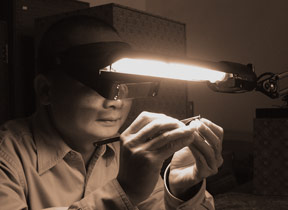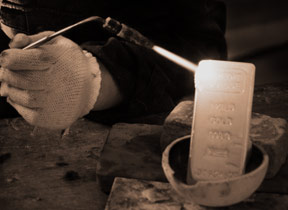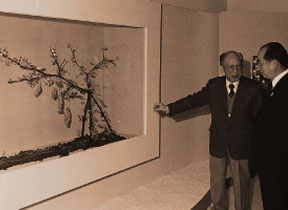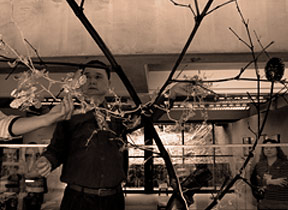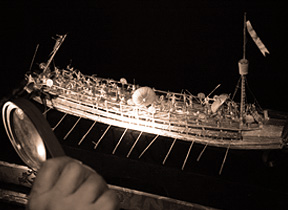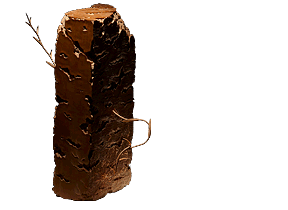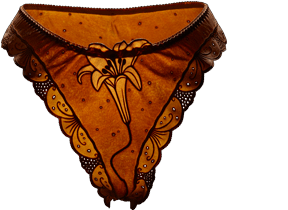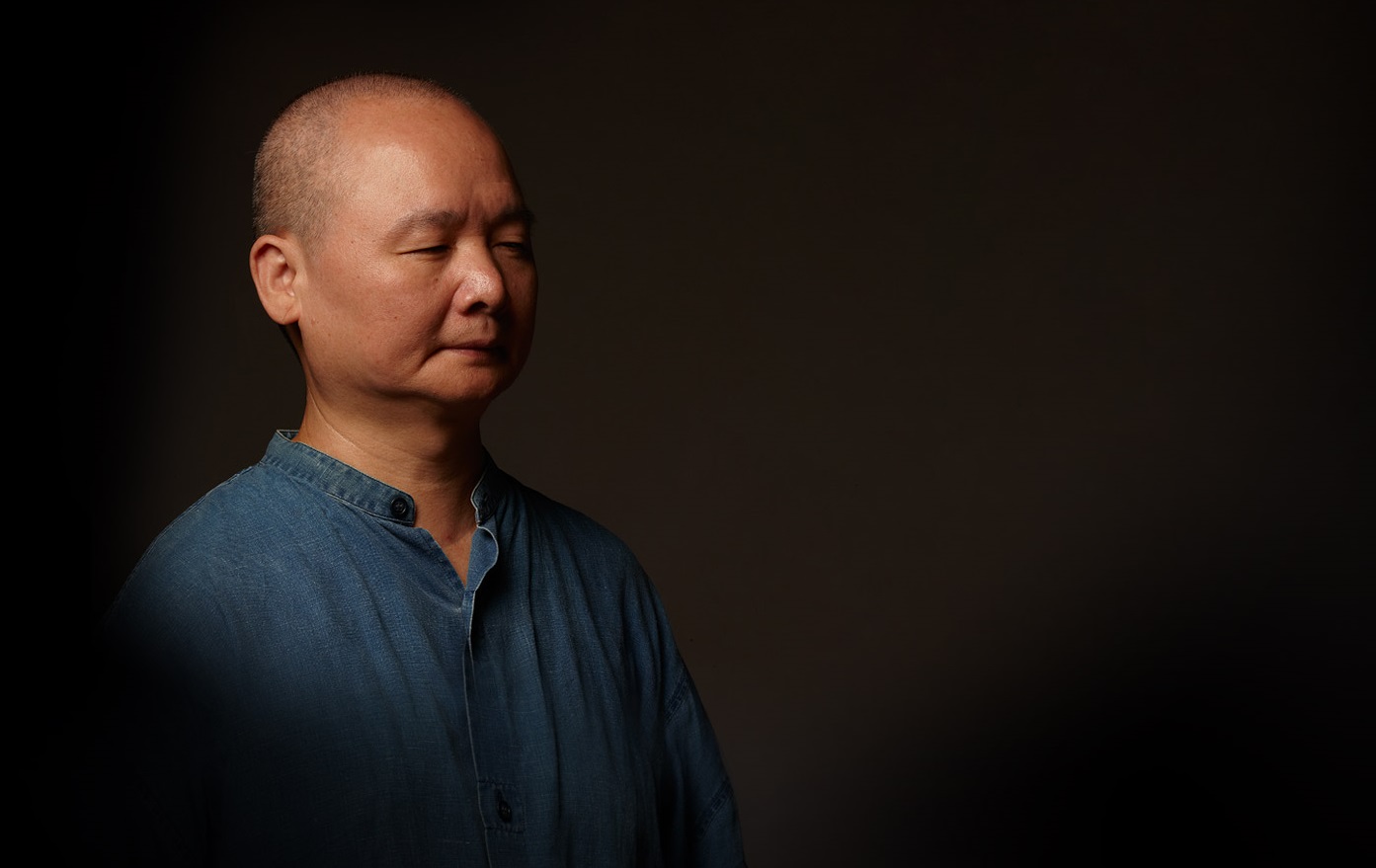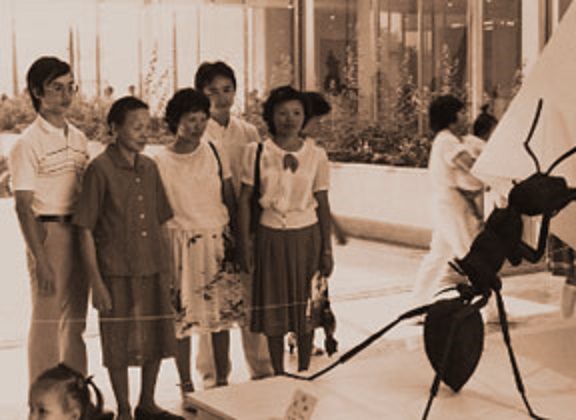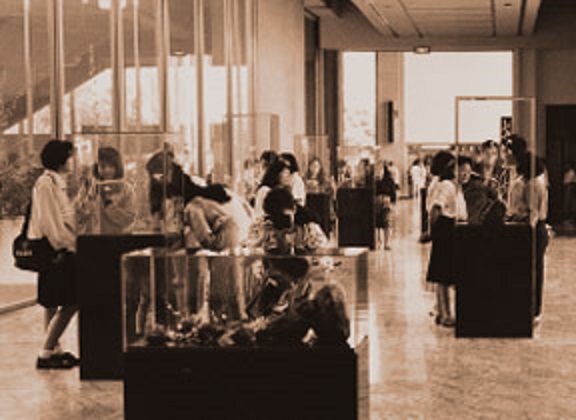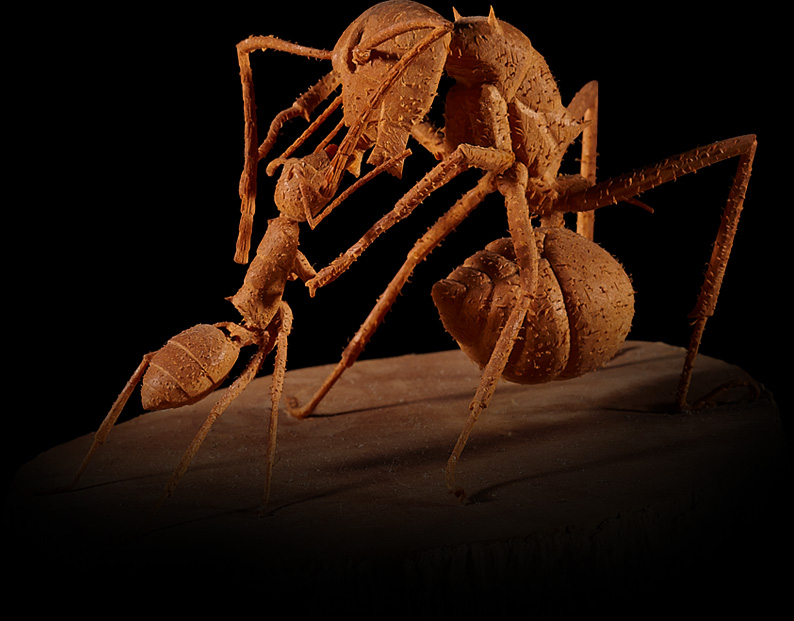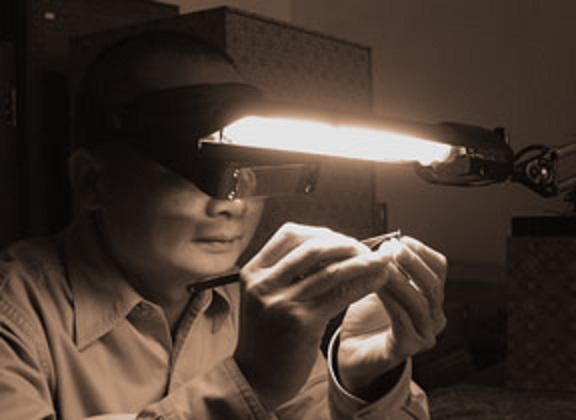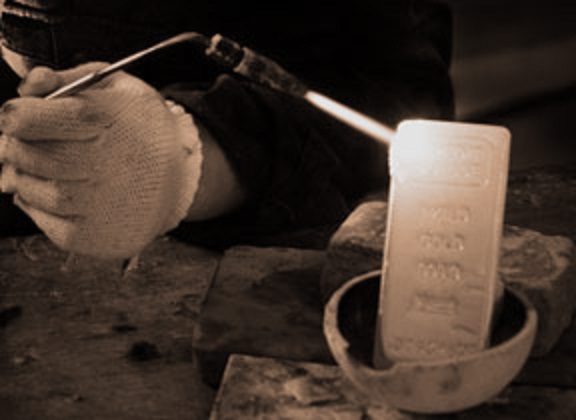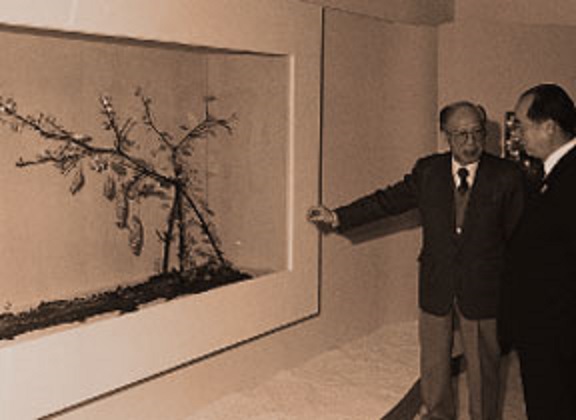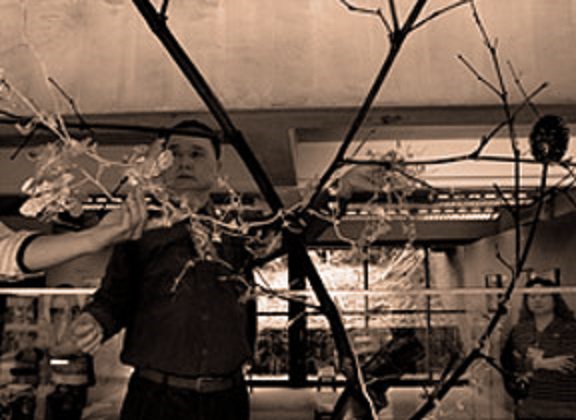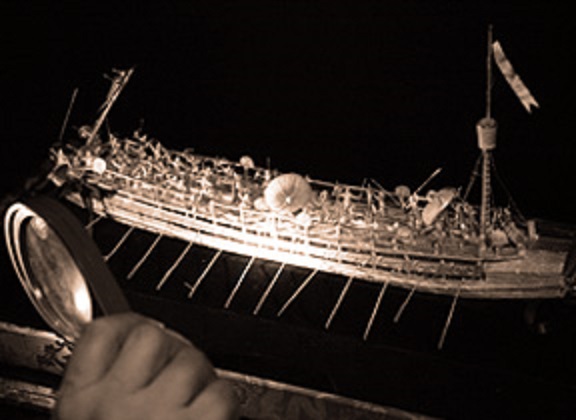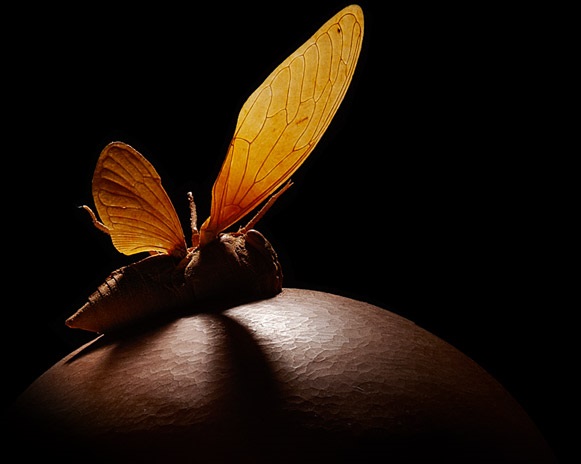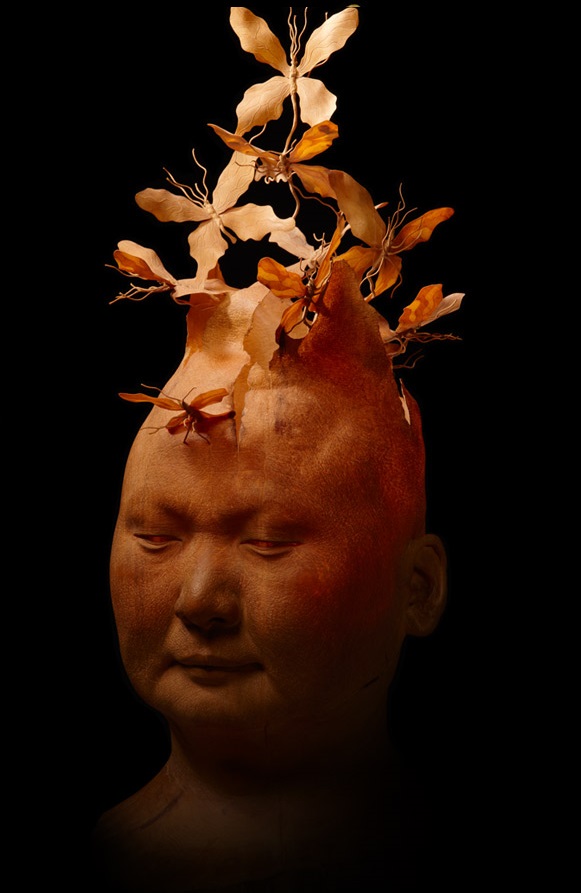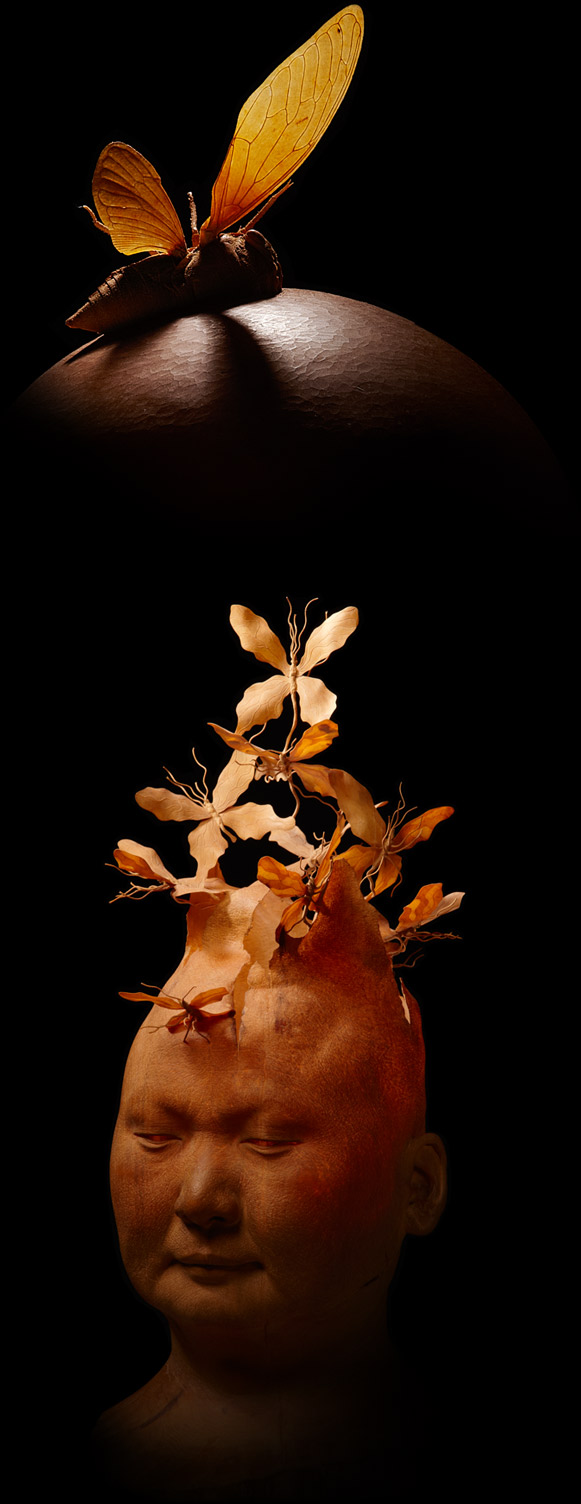Wu Ching was born into a simple farming family of Chiayi, Taiwan in 1956. The only word to describe his youth is “wild.”
He was never interested in studying, and often skipped going to school and got into trouble much to the consternation of teachers and family.
While wild and rebellious, Wu Ching never took a wrong turn. Farming village life was pretty simple, giving him a most unfettered childhood and a far more genuine experience of life than most. Wandering amidst an abundant natural environment and an ardent and steady interest in art since middle school cultivated a strong affection for nature, deep love of life and keen sense of observation that became the basis of his art.
He first encountered carving at age 17 and developed his rudimentary technique from carving wood furniture. Without any formal training or schooling, he had his own unique style.
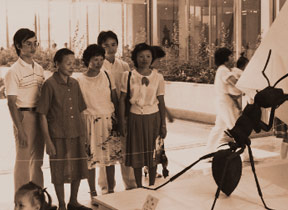
Before military service, Wu Ching roamed Taiwan three years learning carving techniques, hence his open-minded outlook. He displayed his ant series of woodcarvings in 1984 at the Taipei Museum of Art, gaining prominence after which he was invited to display in Japan.
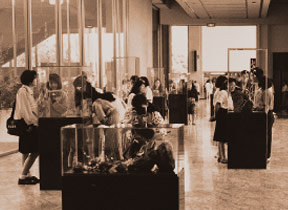
He first attempted the delicate woodcarving series depicting ants after observing the ecology of ants at age 19. He was astonished that they worked together as a group to transport a gecko egg many times their size. He was so moved by this that this became the theme of his first woodcarving.
It took seven years starting 1978 challenging himself and developing the delicate woodcarving technique to complete woodcarvings of 25 ants.
With a solid and precise woodcarving technique, he could carve wood as thin as a cicada’s wing, for a stunning surreal effect, leaving observers gasping in amazement. This set new records for woodcarving and established his leading position in the art of minute woodcarving.








